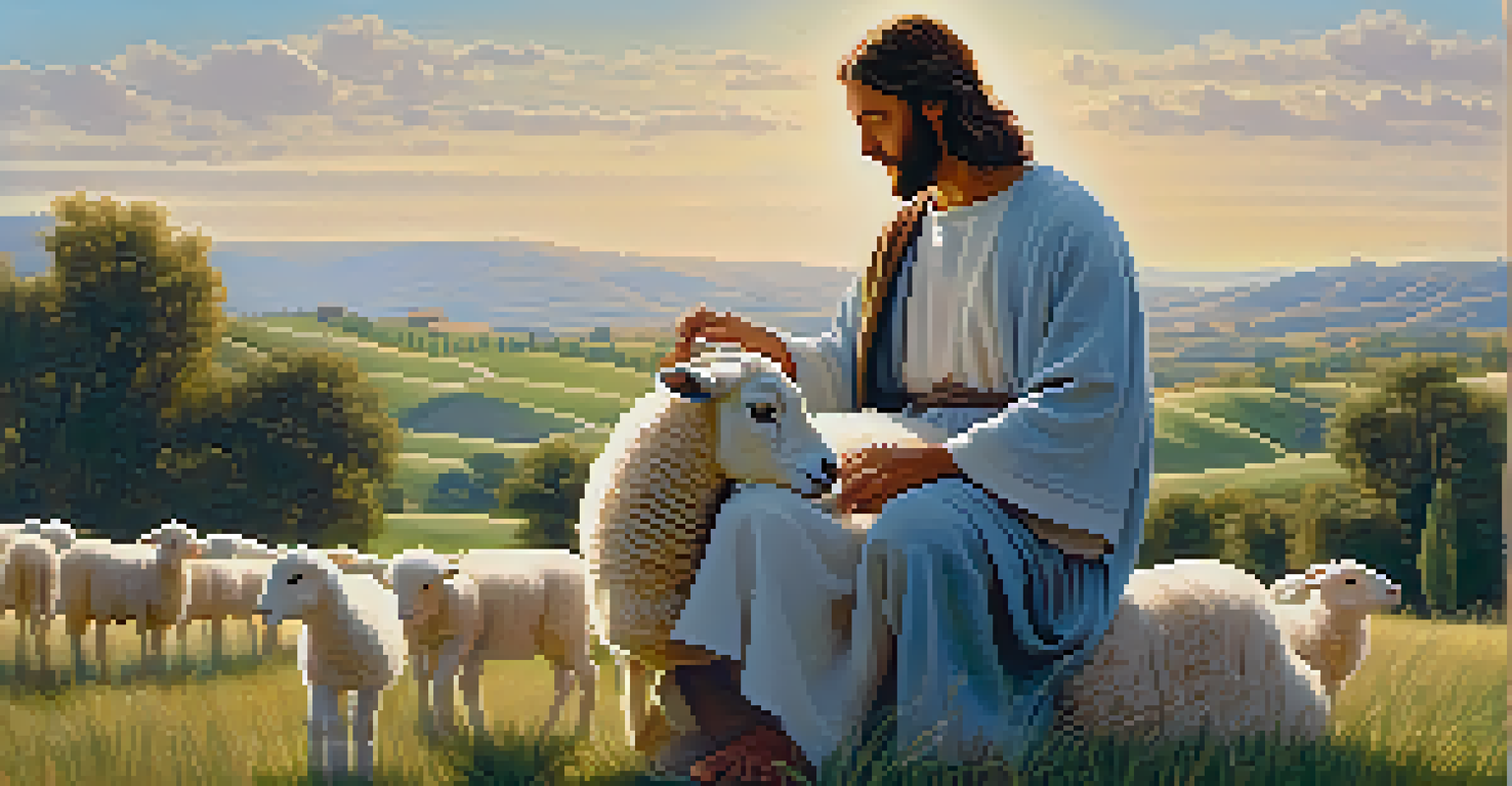The Role of Iconography in Shaping Religious Art Traditions

Understanding Iconography in Religious Art
Iconography refers to the visual images and symbols used in art to convey specific meanings. In religious contexts, these images can represent divine figures, events, or teachings. By understanding iconography, we can appreciate the layers of meaning embedded in religious artworks.
Art is the most beautiful of all lies.
For instance, a painting of the Virgin Mary may include symbols like the rose or the crescent moon, each carrying deep theological significance. These elements are not just decorative; they serve as visual shorthand for complex beliefs and narratives. As a result, iconography helps believers connect with their faith on a deeper level.
Moreover, the use of iconography can vary widely between different religious traditions. While Christianity might emphasize saints and biblical scenes, Hinduism may focus on deities with multiple arms, each representing different attributes. This diversity showcases how iconography influences and reflects the unique beliefs of various cultures.
Historical Context of Iconographic Traditions
The roots of iconography in religious art can be traced back to ancient civilizations, where symbols were used to communicate the divine. In many cultures, these symbols evolved over time, adapting to new beliefs while retaining their foundational meanings. This historical continuity has helped shape the distinctive styles we see today.

For example, Byzantine art is known for its use of gold backgrounds and stylized figures, which were designed to reflect the heavenly realm. Meanwhile, the Renaissance brought a shift towards more naturalistic representations, highlighting the human aspect of divine stories. This evolution illustrates how iconographic traditions can both preserve and transform religious narratives.
Iconography Deepens Faith Connections
Iconography uses symbols to convey complex theological meanings, helping believers engage more deeply with their faith.
As art movements progressed, iconography remained a vital tool for artists to convey their messages. The transition from medieval to modern art showcases how artists reinterpreted traditional symbols to resonate with contemporary audiences, proving that iconography is not static but rather a living tradition.
Iconography as a Tool for Education
One of the primary roles of iconography in religious art is its educational function. Religious images often serve as visual sermons, teaching the principles of faith through easily digestible symbols. This makes complex theological concepts accessible to a wider audience, especially to those who may be illiterate.
Symbols are the language of the soul.
Take, for instance, the use of the Good Shepherd metaphor in Christian art, which portrays Jesus caring for His flock. This imagery encapsulates themes of love, protection, and sacrifice, conveying profound messages in a simple, relatable manner. Such iconographic representations help reinforce the teachings of faith.
In many cases, these visual aids are employed during worship and rituals, further embedding them into the community's collective memory. As congregants engage with these images, they internalize the lessons they represent, creating a shared understanding of their beliefs.
The Influence of Local Culture on Iconography
As religious art travels across regions, it often encounters local customs and cultural elements. This interaction can lead to the incorporation of unique iconographic elements that reflect the specific beliefs and practices of a community. This blending of styles creates a rich tapestry of religious art.
For example, in Latin America, indigenous symbols and aesthetics have been woven into Catholic iconography following the arrival of European missionaries. This fusion has resulted in artworks that resonate deeply with local populations, allowing them to relate their indigenous heritage to their adopted faith.
Cultural Influences Shape Iconography
As religious art interacts with local customs, unique iconographic elements emerge, enriching the artwork and fostering community identity.
Such cultural exchanges not only enrich religious art but also ensure its relevance in diverse contexts. By incorporating local iconography, religious art can communicate more effectively with the community it serves, fostering a sense of belonging and shared identity.
Contemporary Perspectives on Religious Iconography
In today's world, the role of iconography in religious art is being reexamined in light of modern values and ideas. As society evolves, so too does the interpretation of traditional symbols. Contemporary artists are often tasked with finding new ways to express ancient beliefs while addressing current issues.
For instance, some modern artists are using iconographic elements to comment on social justice, environmental concerns, or personal identity. This shift demonstrates that iconography is not confined to religious expression; it can also serve as a medium for broader societal dialogue.
Moreover, the rise of digital art has introduced new opportunities for iconography to flourish. Artists can now create interactive, multimedia representations that engage audiences in dynamic ways, further expanding the reach and impact of religious symbols in contemporary culture.
Challenges in the Interpretation of Iconography
While iconography enriches religious art, it also presents challenges in interpretation. Different viewers may ascribe varying meanings to the same symbols based on their personal backgrounds, beliefs, or cultural contexts. This subjectivity can lead to misunderstandings or misinterpretations of the artwork.
For example, a symbol that holds deep significance in one tradition might be unfamiliar or even offensive to someone from another background. This highlights the importance of context in understanding iconography and stresses the need for cultural sensitivity in discussions about religious art.
Modern Challenges in Interpretation
Different cultural backgrounds can lead to varying interpretations of symbols in religious art, highlighting the need for context and sensitivity.
Art historians and theologians often work together to unravel these complexities, aiming to provide insights that honor the various interpretations. By fostering dialogue about these differences, we can create a more inclusive understanding of religious art and its iconography.
The Future of Iconography in Religious Art
Looking ahead, the future of iconography in religious art is likely to be shaped by ongoing cultural shifts and technological advancements. As global communication accelerates, iconographic symbols may continue to evolve, reflecting the interconnectedness of diverse faiths and traditions. This evolution presents exciting possibilities for artistic expression.
Moreover, with the rise of social media, artists have new platforms to share and reinterpret religious imagery, reaching broader audiences than ever before. This democratization of art allows for a multitude of voices to contribute to the conversation around iconography, enriching the tradition.

Ultimately, the role of iconography will remain vital in helping communities express their beliefs and values. As we move forward, balancing tradition with innovation will be key to preserving the essence of religious art while allowing it to adapt to contemporary life.